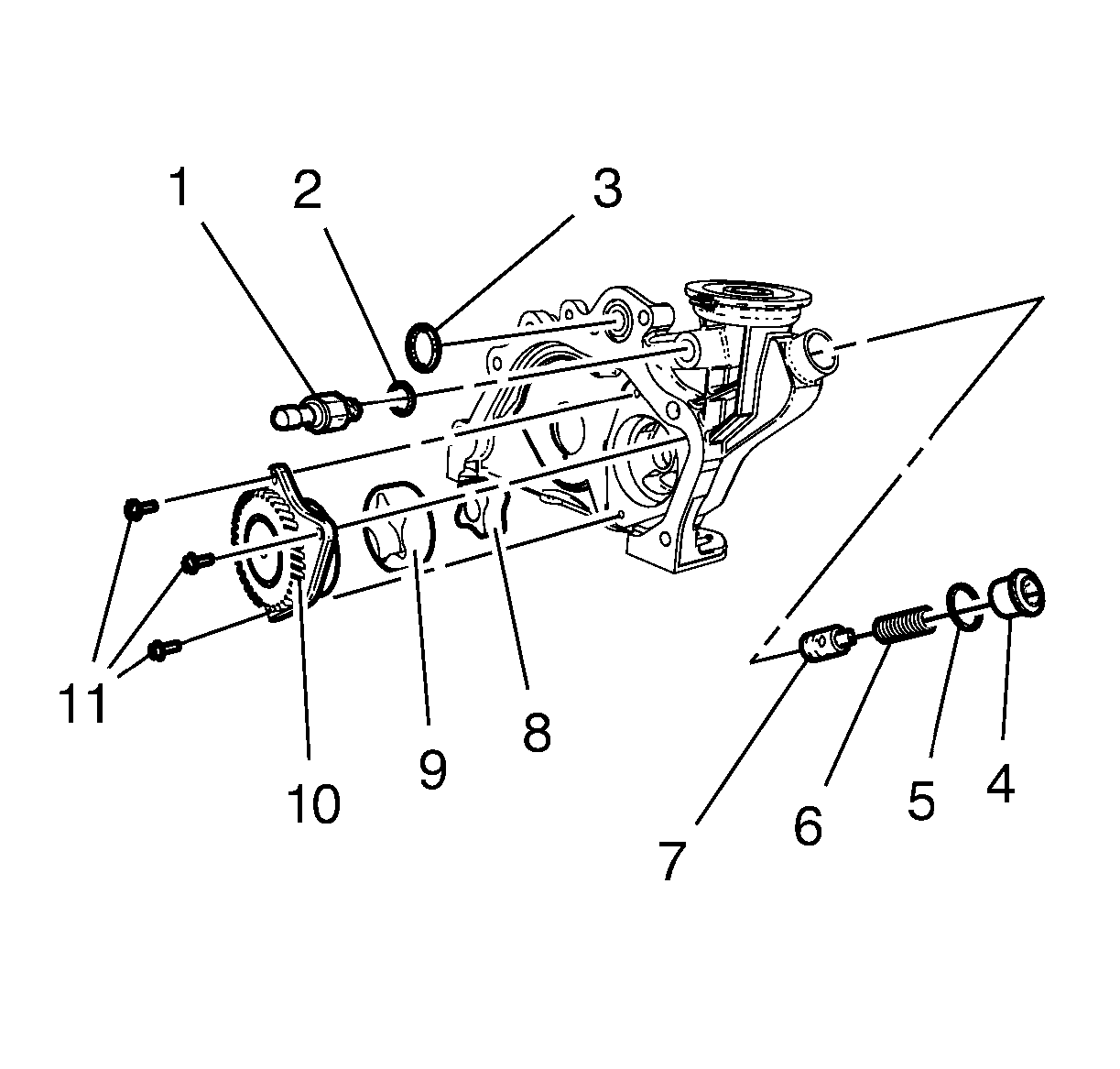Special Tools
EN-498-B Oil Pressure Gage
For equivalent regional tools, refer to
Special Tools
.
- With the vehicle on a level surface, run the vehicle for a few minutes, allow adequate drain down time, 2-3 minutes, and measure the oil level.
- If required, add the recommended grade engine oil and fill the crankcase until the oil level measures full on the oil level indicator.
- Run the engine briefly, 10-15 seconds, and verify low or no oil pressure on the vehicle gage or light.
- Listen for a noisy valve train or a knocking noise.
- Inspect for the following conditions:
| • | Oil diluted by water or glycol antifreeze |

- Remove the engine oil pressure sensor (1).

Caution: Special new tool EN 47971 must be used. Due to the special size and thread pitch of the oil filter adapter fitting ensure the proper tool is used or component damage will result.
- Install the
EN-498-B gage
to the engine oil pressure sensor thread hole and tighten to
30 N·m (23 lb ft)
.
- Run the engine and measure the engine oil pressure.
- Compare the readings to
Engine Mechanical Specifications
.
- If the engine oil pressure is below specifications, inspect the engine for 1 or more of the following conditions:
| • | Cracked, porous, or restricted oil galleries. |
Caution: This engine uses a special high performance oil filter. Use of any other filter may lead to filter failure and/or severe engine damage.
- If the oil pressure reading on the
EN-498-B gage
, or equivalent, is within specifications, inspect for the following conditions:
| • | Plugged or incorrect oil filter and/or malfunctioning oil bypass valve. Repair, as necessary. |
| • | Malfunctioning
EN-498-B gage
or sensor. Repair, as necessary. |


